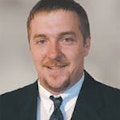While success in Texas for opponents of insurance company investment or ownership may signal the eventual end to the issue, many vexing concerns remain.As you will read in our coverage detailing the bill’s passage in the Texas Senate on the frontcover by Lisa Greenberg, a key amendment to the bill removed the divestiture requirement that would have forced insurers to sell their stakes in repair facilities. Existing facilities may remain under present ownership, with conditions designed to protect consumers, but insurance companies will be prohibited from building any new shops in Texas. An update and examination of HB 1131 and its potential impact will appear in next month’s issue.For now, with a success in Texas, we must expect an increased push for similar legislation in other states that will build upon this apparent success. You should also expect the reintroduction of legislation to ban insurer-owned shops in California. The big impact, though, will be upon the long-term aspirations of other insurers to own and operate repair facilities.Any insurer considering an investment will be forced to think twice—maybe even three or four times—before jumping on the shop bandwagon. As I’ve written in recent months, further investment is unlikely in any case, given the policyholder density demographics other insurers face. But if laws prohibiting insurance company ownership of shops go along a similar route as non-OEM parts disclosure and consent bills, insurers will likely take a pass on any investment opportunities. The complexity of compliance and limits upon growth may be big deterrents. Even if a local or regional insurer with sufficient policyholder density to make a shop operation work is not faced with a law prohibiting investment where they conduct business, the day they make a shop investment or acquisition, the legislative wheels will begin to turn and independent repairers will seek protection for themselves and their customers. I imagine an insurer looking for a competitive advantage could find one that doesn’t require the navigation of such a treacherous legislative battlefield.Also, the lack of a divestiture requirement in the Texas bill may not be a great loss to the efficacy of the bill that opponents of insurer ownership had hoped to achieve. Allstate and the very few others who have invested in repair operators may see their potential for growth limited and divest on their own accord to search for a more attractive growth prospect with a better return on their investments.I expect that in a few years’ time, we will look back at the fears many in the industry shared about the prospect of insurer-owned repair facilities and wonder why we didn’t see the future, which will be so clear in hindsight. Certainly, legislation and legal challenges aimed at further defining insurer conduct toward both insureds and shops will continue to play a role. However, for most independent repairers, the main concern five years from now will still be how to compete against their larger competitor down the street or how to remain profitable while managing to satisfy insurers’ demands for cost control. Through it all, car owners will become even harder to satisfy.In essence, the day-to-day business of collision repair will not have changed that dramatically from today—with or without a few insurer-owned shops.
About the Author

Russell Thrall III
Former ABRN Editor-in-Chief Russell Thrall, a second-generation collision repairer, has experienced the shop from the bottom up, starting as a clean up person and working his way to assistant manager by age 17. Thrall joined the staff of Chilton's Automotive Body Repair News in 1991 as technical editor and as senior editor in 1992. From 1993 through 2000, Thrall served as editor of Collision Repair Industry INSIGHT. Thrall returned to the staff of ABRN in June 2000 as editor-in-chief of the industry's largest monthly trade magazine. Thrall was a frequent speaker at industry events including the Collision Industry Conference (CIC), NACE, and numerous other local and regional events. He served as co-chairman of the Collision Industry Conference Electronic Commerce committee and is a member of the Board of Directors of the National Auto Body Council.